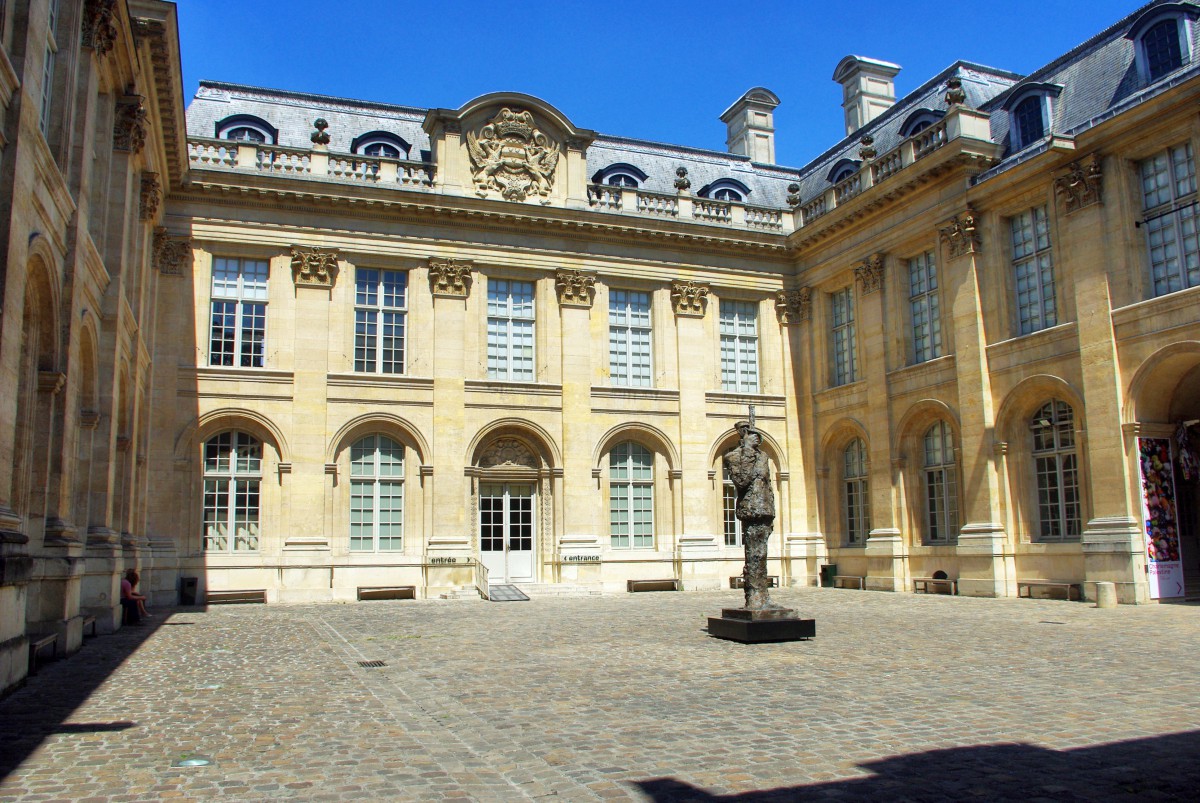The Hotel de Saint-Aignan hides an odd feature that most visitors to the Museum of Jewish Art and History would not know. To see it, pass through security to enter the inner courtyard of the mansion. What you’re about to discover goes back to the 17th century and even to the Middle-Ages… Let’s go to 71 rue du Temple in the 3rd arrondissement of Paris.
A brief history of the Hotel de Saint-Aignan
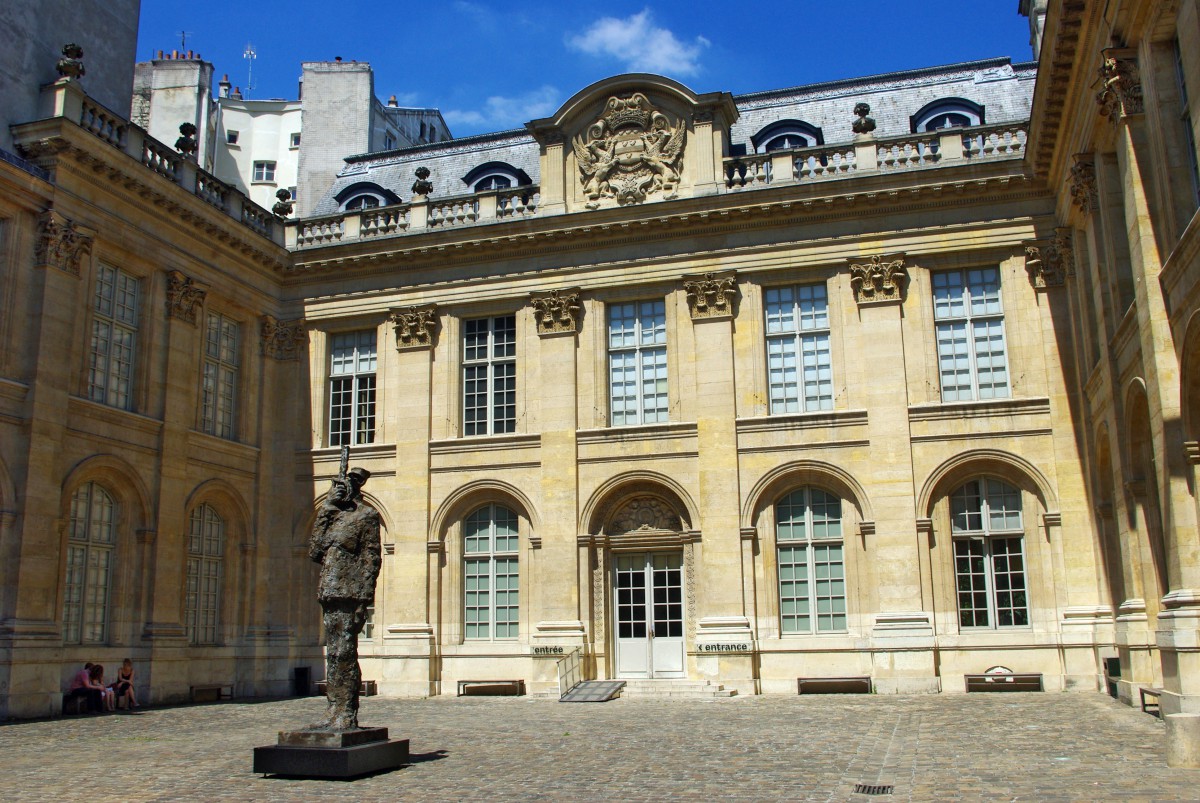
The mansion was built between 1644 and 1650 for Claude de Mesmes (1595–1650). Known as Count of Avaux, the French diplomat took part in the negotiations of the Peace of Westphalia (1648) that brought Alsace into the kingdom of France.
In 1688, it was purchased by Paul de Beauvilliers (1648-1714), duke of Saint-Aignan and a government official under King Louis XIV. His coat of arms can still be seen on the pediment of the residence.
The Anne-Frank garden was the garden of the Hotel de Saint-Aignan. Situated at the rear of the residence, the public garden is accessible via the dead-end street of Impasse Berthaud, off rue Beaubourg. It was initially designed by André Le Nôtre in the end of the 17th century and featured ornamental flower beds.
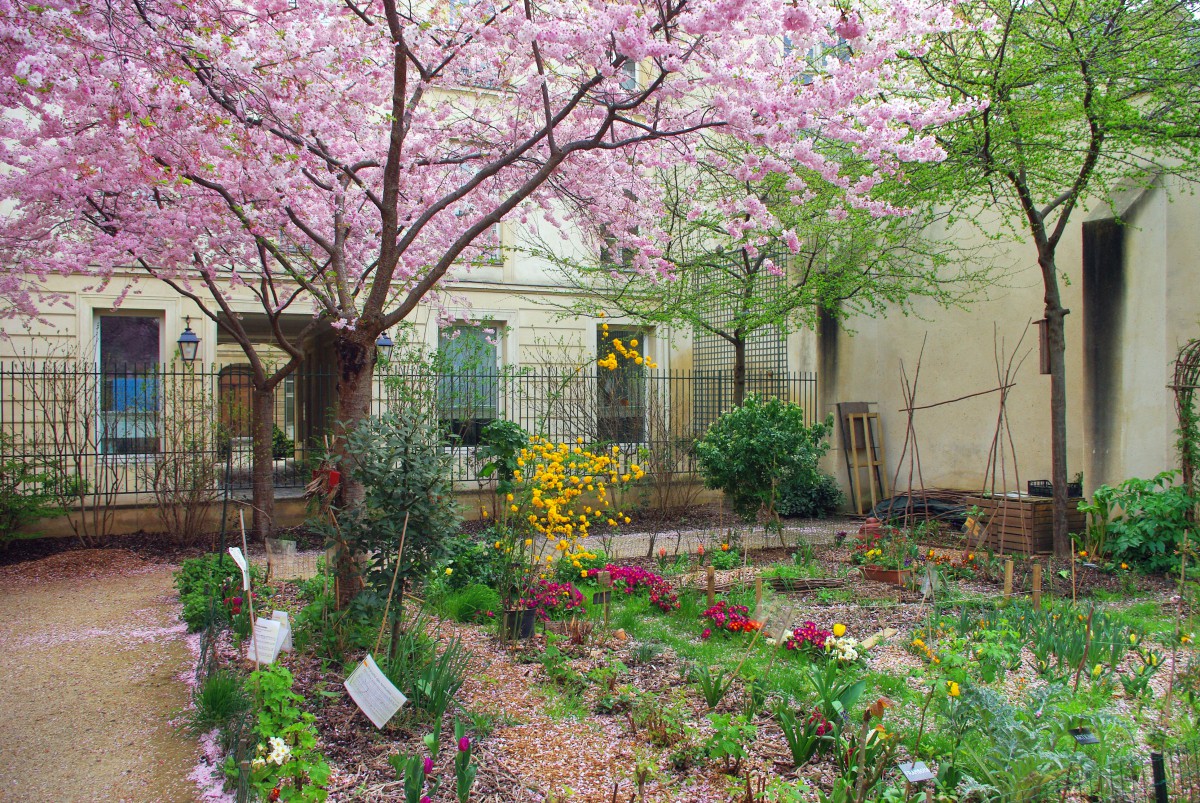
Today the mansion houses the Musée d’Art et d’Histoire du Judaïsme or mahJ. The museum displays collections on the rich history and culture of Jews in Europe and North Africa from the Middle Ages to the 20th century.
The inner courtyard of Hotel de Saint-Aignan
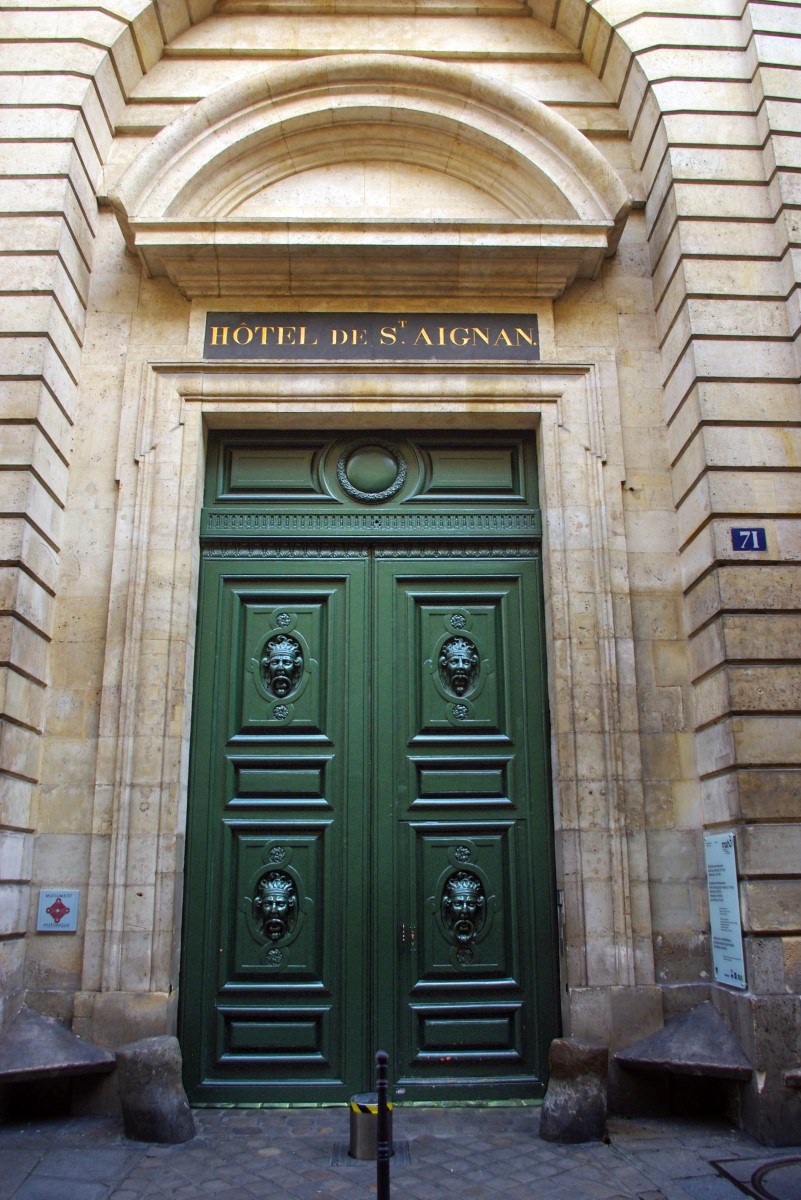
The large rectangular courtyard of the Hôtel de Saint-Aignan borders the main residence of the mansion. It is separated from the street (rue du Temple) by a monumental porch. Notice the beautiful door handle.

This follows the usual ground plan for large aristocratic mansions in the Marais district. However, the architect had to deal with building the mansion on an irregular plot of land.
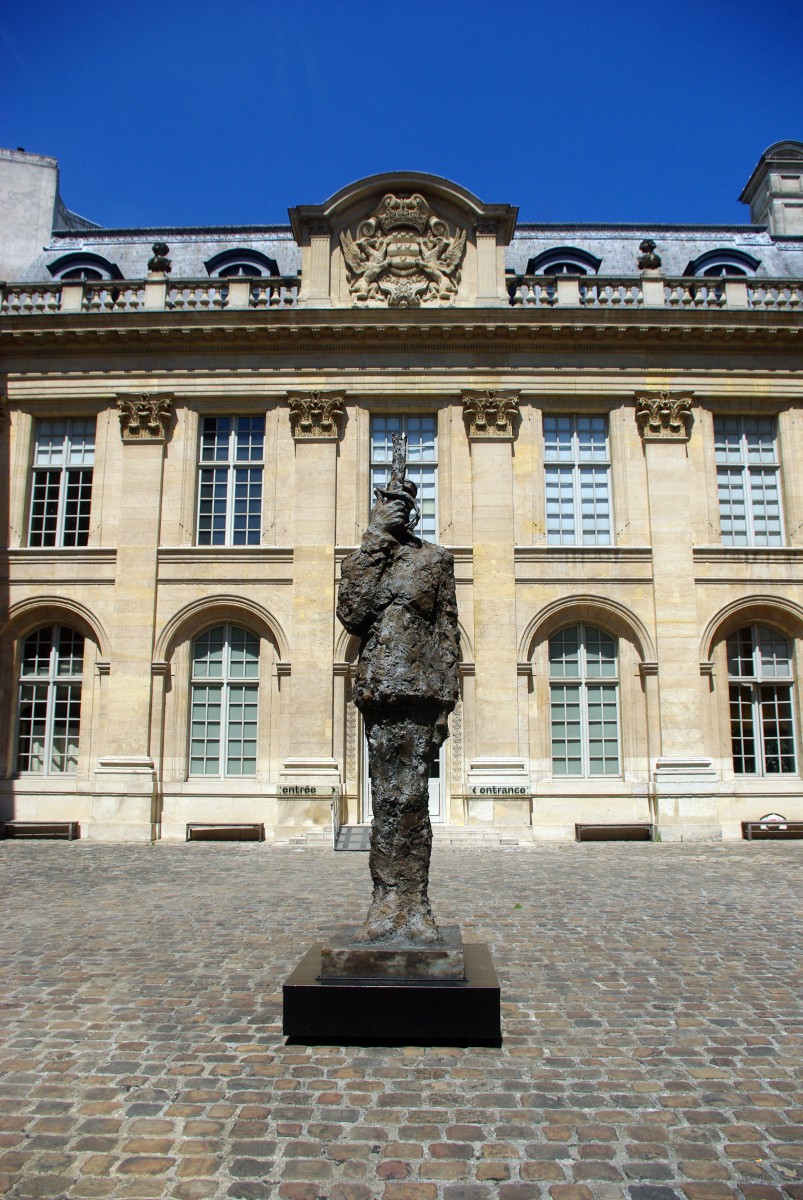
The statue of Captain Dreyfus stands in the middle of the courtyard. Sculptor Tim represented the French Jewish artillery officer holding his broken sword.
The blank wall with false windows

Once you reach the inner courtyard, take a closer look at the left façade. When building the residence, the King’s architect Pierre Le Muet needed to create a sense of symmetry. The irregularity of the plot of land prevented him to build a mansion with two wings. The left wing was a real problem because the land was not large enough to built it. The wall that bordered the plot was in fact the remains from the Philip Augustus wall edified around 1200.
Le Muet found a solution in building a blank façade of the left wing. He decorated it with pilasters and false windows as to imitate the right wing. He was some sort of a magician for the trick still works today… and how many visitors to the museum have any idea of this?
How to get to the Hotel de Saint-Aignan
- The Hotel Saint-Aignan is situated at number 71 rue du Temple, near the intersection with rue de Rambuteau (3rd arrondissement). Click here to locate the mansion on google map.
- To access the courtyard, you have to go through security. However it is free to get to the courtyard (the ticket office to the museum is found in the residence at the end of the courtyard).
- Closest métro station: Rambuteau (line 11).
- For more info about the Museum of Jewish Art and History (opening times, collections…), check out the official website [in English].
Did you enjoy what you read? If so, share this article on Facebook, Twitter or Pinterest!

